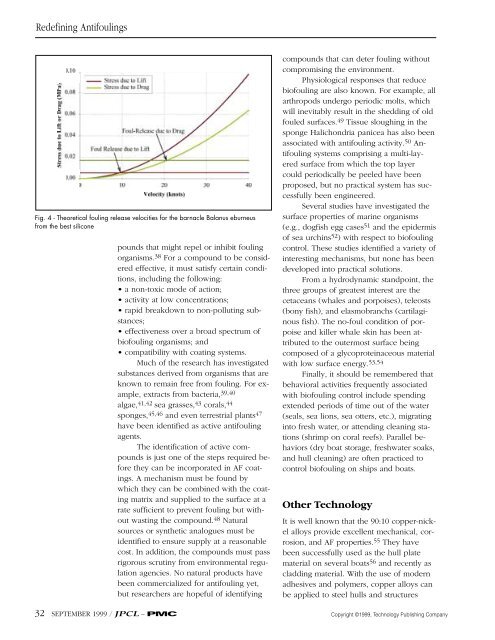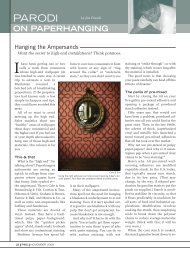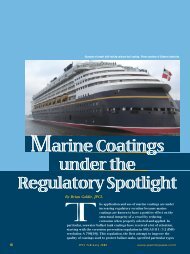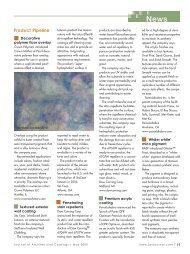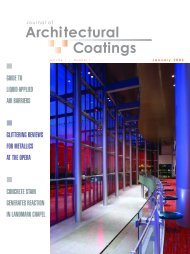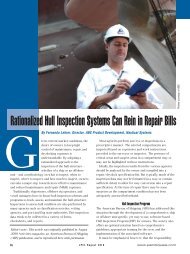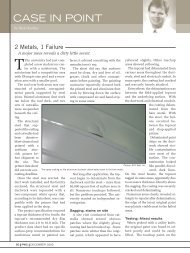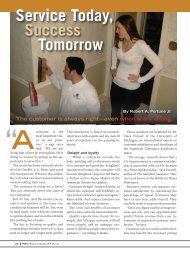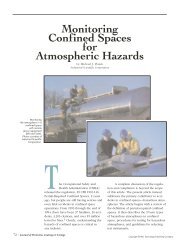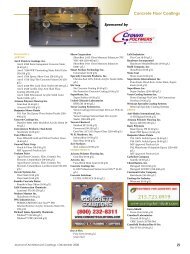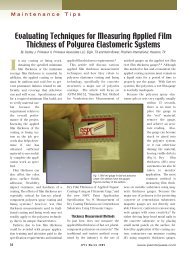Redefining Antifouling Coatings - PaintSquare
Redefining Antifouling Coatings - PaintSquare
Redefining Antifouling Coatings - PaintSquare
Create successful ePaper yourself
Turn your PDF publications into a flip-book with our unique Google optimized e-Paper software.
<strong>Redefining</strong> <strong>Antifouling</strong>sFig. 4 - Theoretical fouling release velocities for the barnacle Balanus eburneusfrom the best siliconepounds that might repel or inhibit foulingorganisms. 38 For a compound to be consideredeffective, it must satisfy certain conditions,including the following:• a non-toxic mode of action;• activity at low concentrations;• rapid breakdown to non-polluting substances;• effectiveness over a broad spectrum ofbiofouling organisms; and• compatibility with coating systems.Much of the research has investigatedsubstances derived from organisms that areknown to remain free from fouling. For example,extracts from bacteria, 39,40algae, 41,42 sea grasses, 43 corals, 44sponges, 45,46 and even terrestrial plants 47have been identified as active antifoulingagents.The identification of active compoundsis just one of the steps required beforethey can be incorporated in AF coatings.A mechanism must be found bywhich they can be combined with the coatingmatrix and supplied to the surface at arate sufficient to prevent fouling but withoutwasting the compound. 48 Naturalsources or synthetic analogues must beidentified to ensure supply at a reasonablecost. In addition, the compounds must passrigorous scrutiny from environmental regulationagencies. No natural products havebeen commercialized for antifouling yet,but researchers are hopeful of identifyingcompounds that can deter fouling withoutcompromising the environment.Physiological responses that reducebiofouling are also known. For example, allarthropods undergo periodic molts, whichwill inevitably result in the shedding of oldfouled surfaces. 49 Tissue sloughing in thesponge Halichondria panicea has also beenassociated with antifouling activity. 50 <strong>Antifouling</strong>systems comprising a multi-layeredsurface from which the top layercould periodically be peeled have beenproposed, but no practical system has successfullybeen engineered.Several studies have investigated thesurface properties of marine organisms(e.g., dogfish egg cases 51 and the epidermisof sea urchins 52 ) with respect to biofoulingcontrol. These studies identified a variety ofinteresting mechanisms, but none has beendeveloped into practical solutions.From a hydrodynamic standpoint, thethree groups of greatest interest are thecetaceans (whales and porpoises), teleosts(bony fish), and elasmobranchs (cartilaginousfish). The no-foul condition of porpoiseand killer whale skin has been attributedto the outermost surface beingcomposed of a glycoproteinaceous materialwith low surface energy. 53,54Finally, it should be remembered thatbehavioral activities frequently associatedwith biofouling control include spendingextended periods of time out of the water(seals, sea lions, sea otters, etc.), migratinginto fresh water, or attending cleaning stations(shrimp on coral reefs). Parallel behaviors(dry boat storage, freshwater soaks,and hull cleaning) are often practiced tocontrol biofouling on ships and boats.Other TechnologyIt is well known that the 90:10 copper-nickelalloys provide excellent mechanical, corrosion,and AF properties. 55 They havebeen successfully used as the hull platematerial on several boats 56 and recently ascladding material. With the use of modernadhesives and polymers, copper alloys canbe applied to steel hulls and structures32 SEPTEMBER 1999 / JPCL – PMCCopyright ©1999, Technology Publishing Company


